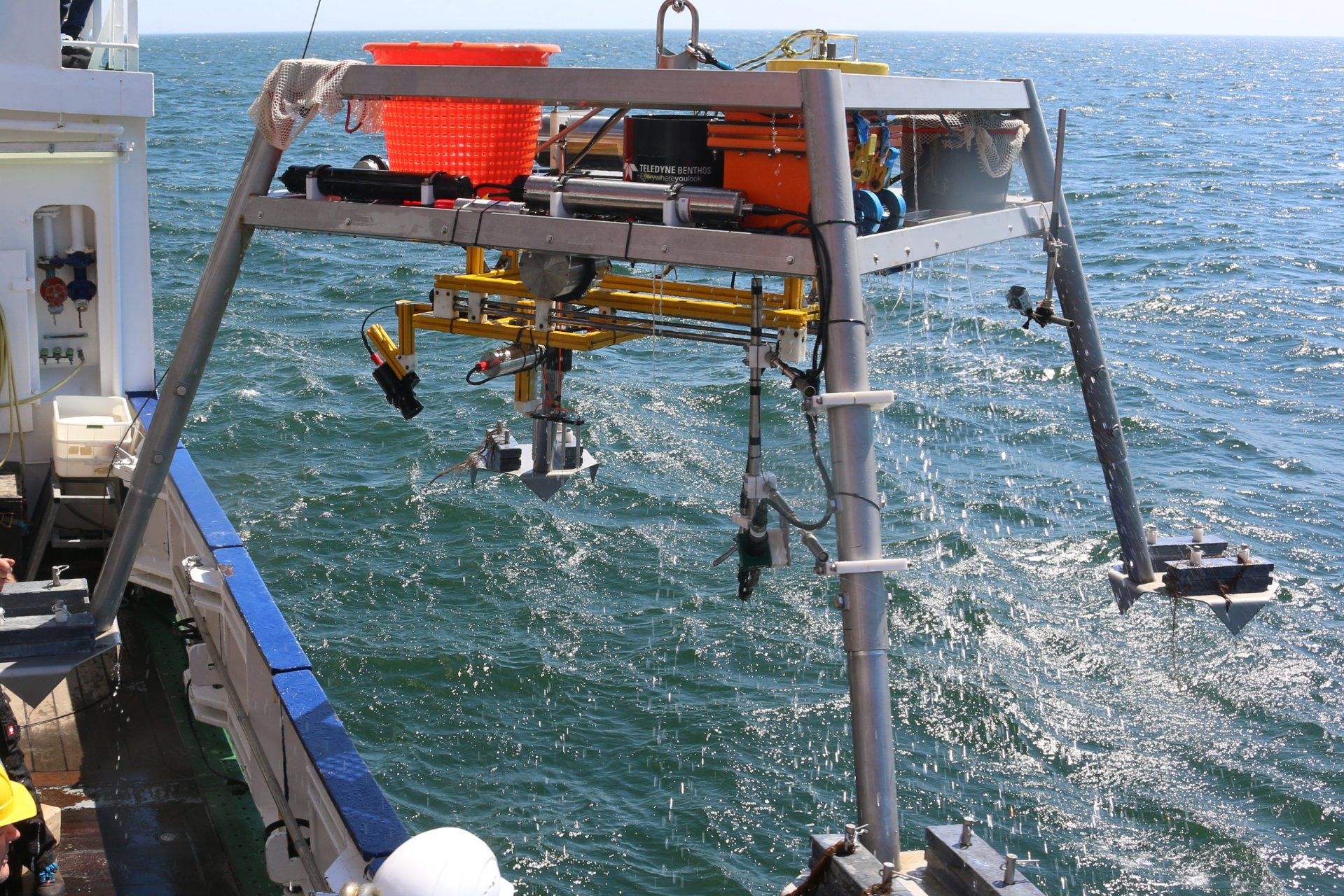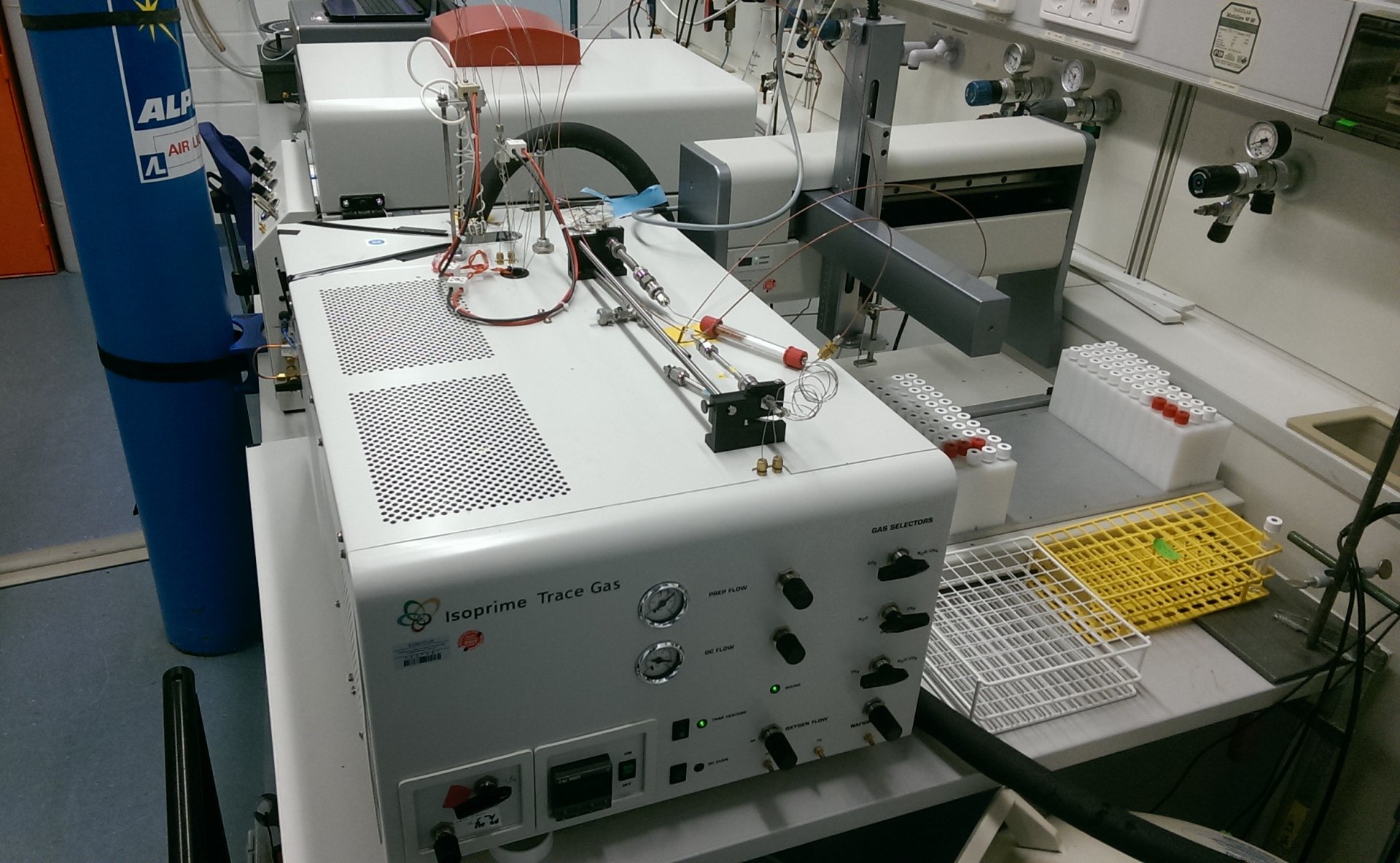Page path:
- Departments
- Department of Biogeochemistry
- Facilities & Equipment
Facilities & Equipment
The tools used in the Biogeochemistry Group include a range of analytical, radiotracer, and stable isotope methods that are applied to samples and/or experiments. A brief description of the facilities and equipment available for our research in the Biogeochemistry department is given below.
Sea-going equipment
- Lance-A-Lot is a benthic observatory that operates autonomously and performs a series of complex tasks. The system was developed to understand the dynamic interaction of bottom water currents, sediment transport and benthic exchange processes.
- Four in situ-pumps for filtering large amounts of water (up to 2000 liter) in situ for collection of adequate amounts organic matter for organic geochemistry, isotope analysis, metagenomics and gene expression.
- Pump-CTD and mini Pump-CTD system for continuous water sampling throughout the water column (max 300meter depth) that allows high resolution sampling of gradients in the water column as well as sampling of larger amounts of water for i.e. incubations from selected depths, without any contact with the atmosphere (i.e oxygen).
- Surface multi-core and large gravity core (>1000 kg, 12 cm diameter, 12 m length) sediment sampling systems
- Delta Plus XP coupled to a Flash EA 112. Isotopic ratio mass spectrometer coupled to an elemental analyzer for the analysis of δ13C and δ15N on solid samples.
- IsoPrime100 combined with a Trace Gas. Multicollector isotopic ratio- mass spectrometer for gas analysis of N2, N2O, NO, O2, CH4 and isotopomers on water or gas samples at low (nanomolar) concentrations.
- Picarro G2201. Cavity Ring-Down Spectrometer for carbon isotope analysis, it is coupled to an auto sampler (Automate FX) for dual or single δ13C isotopic analysis of CO2 (DIC) and CH4 from water or gas samples.
- GAM200 InProcess Instrument. A membrane inlet mass spectrometer (MIMS) enabling us to do online, real time measurements of 29+30N2, O2 and Ar, with a variety of customized set-ups. Other applications include for example labeling percentage measurements of N2 for N2-fixation experiments.
- Laser microdissection microscope (Leica LMD6500) with 10x - 63x air objectives and fluorescent filters (DAPI, Cy3, Cy5, Alexa594). UV laser for cutting (wavelength: 355 nm, pulse frequency: 80 Hz, pulse length: < 4ns, avg. pulse energy 70 μJ) and visualization with a CC7000 color camera.
- Environmental scanning electron microscope (FEI Quanta 250 FEG) with a transmission electron detector (STEM), a Peltier cooling table and a Bruker double detector system for energy dispersive X-ray spectrometry (EDS). Accelerating voltages between 200 V to 30 kV and a resolution of 1.0 nm in high vacuum (30 kV, SE). Additionally, a
- (Leica EM CPD300) for drying of biological specimens.


